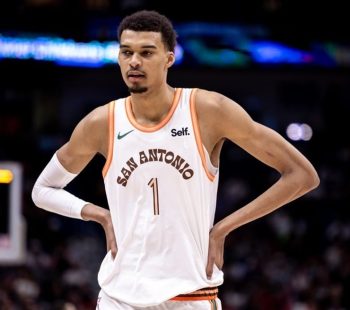NBA
NBA Daily: Is Joe Johnson’s Return Viable?

It seems outlandish, somewhat outrageous. No matter how great they are, players do not spend a healthy year away from the NBA and come back to genuinely contribute, especially not 38-year-olds. Yet, forward Joe Johnson reportedly has scheduled workouts with the Milwaukee Bucks, Brooklyn Nets and Detroit Pistons next week.
Johnson has been out of the league for a year, and his performance in the 2017-18 season gave teams reason to leave him unattended as a free agent. However, an MVP turn in the BIG3 has put Johnson back on the radar.
That championship run admittedly saw Johnson average 21.9 points per game, but the BIG3 is a league where the No. 2 scorer was nearly-40-year-old Corey Maggette, out of the NBA for six years now. The leading rebounders were 39-year-old Reggie Evans, out of the NBA for four seasons, and Will McDonald, two years departed from the Chinese Basketball Association. Johnson was the top assist man, beating out Drew League star Franklin Session.
The BIG3 is an entertaining television product ripe with novelty and memories, but it is far from the NBA’s level in every regard. Nonetheless, Johnson has parlayed his success there into three more chances to impress an NBA front office.
Is it realistic to think a 38-year-old can return and be productive?
First, define productive.
In 2017-18, Johnson shot 27.6 percent from three on 4.3 attempts per 36 minutes while scoring 11.1 points per 36 minutes. He averaged 21.9 minutes per game in 55 combined games for the Utah Jazz and Houston Rockets. Those numbers were simultaneously good enough to get Johnson paid that season and bad enough to keep him from a subsequent paycheck, so let’s consider those the bare minimum moving forward.
A total of four players 6-foot-6 or taller and 38 years or older have ever averaged those numbers, per basketball-reference.com. None of them had been neglected by the NBA the year before, and three of them stand out as all-timers – no offense to Johnson, a seven-time All-Star in his own right.
Dirk Nowitzki in 2016-17: 37.8 percent from 3 on 5.3 attempts per 36 minutes; 19.4 points per 36.
Nowitzki in 2017-18: 40.9 percent from 3 on 6.4 attempts per 36 minutes; 17.6 points per 36.
Reggie Miller in 2003-04: 40.1 percent from 3 on 5.3 attempts per 36 minutes; 12.8 points per 36.
Miller in 04-05: 32.2 percent from 3 on 5.1 attempts per 36 minutes; 16.7 points per 36.
Vince Carter in 2016-17: 37.8 percent from 3 on 5.9 attempts per 36 minutes; 11.7 points per 36.
Dale Ellis in 1998-99: 43.3 percent from 3 on 6.3 attempts per 36 minutes; 14.5 points per 36.
In Ellis’ case, it was only the season before those averages in which he set a career high from beyond the arc at 46.4 percent. The career journeyman (eight stints at six organizations in 17 years) had found a role to renew his career, a career he never let stagnate.
A player of Johnson’s size and age finding the success the Bucks, Nets or Pistons may be hoping for is not quite unprecedented, but the only previous examples come from three first-ballot Hall of Famers and the unique situation of Ellis, finding his stroke for the first time, not trying to rekindle it after losing it for two years.
If Johnson can find his form of 2016-17, the season that saw “Iso Joe” can a game-winner for the Jazz against the Los Angeles Clippers in Game 1 of their playoff series, then he should be a fit for one of those three teams bringing him in for a workout – particularly the Bucks.
In the later years of his career, aside from the last one, Johnson could still produce from deep. He shot 41.1 percent from 3 in 2016-17 and 38.3 percent the year before. His effective field goal percentage was 52.1 percent and 50.9 percent in those two seasons, respectively. His herky-jerk game still proved worthwhile, with a foundation built beyond the arc.
The Bucks will never be able to find enough shooters to stash around Giannis Antetokounmpo, and Johnson could also theoretically provide them with a few crunch-time possessions of creation, an area Antetokounmpo yet lacks in the half-court.
The Nets could conceivably hope Johnson can fill in for Kevin Durant for a year, while concocting some nostalgia for fans who think fondly of their Eastern Conference semifinal appearance in 2014.
The Pistons presumably see Johnson as possibly a better scoring option than Luke Kennard as they push for a low playoff seed once again, though it is faulty logic to take opportunities away from a player in his third year in favor of a longshot swan song.
If Johnson can catch onto one of these teams, more power to him. From their perspective, it would be wise to offer only a prove-it contract – not because Johnson has any history of being anything but a consummate professional, but because his comeback would defy logic on multiple levels.
After earning more than $214 million in a career with more than 44,000 minutes in 1,276 games, anything Johnson can contribute moving forward would be a surprise. Both his most recent competition and NBA history suggest it outright unlikely.














